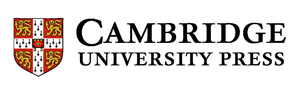Symposium S3
26 – 27 June 2017
Comparing simulations and observations of the varying scales of star formation
Aims and scope
The formation of stars is of fundamental importance in virtually every field of astrophysics, from the birth of planetary systems to the life-cycle of matter within galaxies. Stars are born in the densest regions of molecular clouds, but this process is inefficient. However, the physical mechanisms responsible for determining the star formation efficiency (SFE) remain the subject of debate. Possible causes, such as turbulence, magnetic fields and stellar feedback, can operate over a vast range of physical scales, rendering it highly challenging to determine the relative importance of each process. Until recently, studies of star formation in the Milky Way have mainly focused on individual star-forming regions, but there is growing evidence that star formation is intrinsically a multi-scale process and that the large-scale environment within the Galaxy can influence the behaviour of star-forming regions on small scales. A concerted effort to study the connection between small-scale processes and large-scale environment, both in the Milky Way and in other nearby galaxies, is essential to understand what regulates star formation in galaxies.
Observational studies of star formation are presently in the middle of a golden age, owing to the wealth of data provided by cutting-edge facilities such as Herschel, Spitzer, SOFIA, ALMA, or the EVLA. Thanks to these facilities and others, the Milky Way plane has been surveyed in a multitude of tracers of the interstellar medium with a sensitivity and resolution sufficient to detect and characterise individual molecular clouds and the dense structures within them that are the direct precursors of young stellar clusters. On the theoretical side, large three-dimensional numerical simulations are becoming ever more sophisticated and have begun to include more and more physical processes. The time is therefore ripe to bring together both theorists and observers to discuss what we currently understand about the connection between small-scale processes and the large-scale Galactic environment.
Our Symposium is divided into two parts. The first part will review current efforts to observe star formation in the Galactic Centre, the Galactic plane and in nearby extra-galactic systems, as well as attempts to simulate star formation in all of these environments. The second part will confront a new problem posed by the vast amounts of data now being produced by both observations and simulations of Galactic star formation: how do we compare observations with simulations in a meaningful fashion that uses both types of data to their full potential? Many previous attempts to compare numerical simulations with observations have been relatively crude, often making use of the raw simulation output in the form of densities or temperatures, quantities that are not directly observable. A highly promising alternative technique is to use the simulation data to produce 'synthetic' observations of light that can be analysed in the same fashion as real observations. Synthetic observations in principle allow us to perform like-for-like comparisons between simulated and real sites of star formation. During part II of the Symposium, we aim to review current efforts (i) to produce synthetic observations while accounting for the limitations inherent in real telescopes and instruments, and (ii) to develop and apply statistical techniques for the objective and quantitative comparison of realistic synthetic observations with real observations of star formation on a variety of scales.
Programme
Part 1: observing and simulating star formation on multiple scales
- Star formation at the centre of the Galaxy
- Surveys of the Galactic plane
- Observations of star formation on small scales
- Simulations of star formation on small scales
- Simulations of star formation on Galactic scales
- Star formation in extragalactic systems
Part 2: comparing simulations and observations with the help of synthetic observations
- Synthetic observations of simulations: establishing observational tests to discriminate models
- Strengths and limitations of real observational data
- Statistical tools for comparing simulations and observations
Invited speakers
- Cara Battersby (Harvard-Smithsonian Center for Astrophysics, USA)
- Henrik Beuther (Max Planck Institute for Astronomy, DE)
- Claudia Cyganowski (University of St. Andrews, UK)
- Jim Dale (University of Hertfordshire, UK)
- Annie Hughes (IRAP, University of Toulouse, FR)
- Sarah Jaffa (Cardiff University, UK)
- Stella Offner (UMass Amherst, USA)
- Volker Ossenkopf-Okada (University of Cologne, DE)
- Rowan Smith (University of Manchester, UK)
Scientific organisers
- David Eden (co-chair)
- Simon Glover (co-chair)
- Christine Koepferl
- Kathryn Kreckel
- Anaelle Maury
- Sarah Ragan
- Stefanie Walch
Contact
Simon Glover (glover @ uni-heidelberg.de), David Eden (D.J.Eden @ ljmu.ac.uk)
Updated on Wed Mar 08 14:08:27 CET 2017
|

 A power cut will shut down all EAS services on Tuesday, 10 January 2017 starting at 7:30 CET.
A power cut will shut down all EAS services on Tuesday, 10 January 2017 starting at 7:30 CET.




















